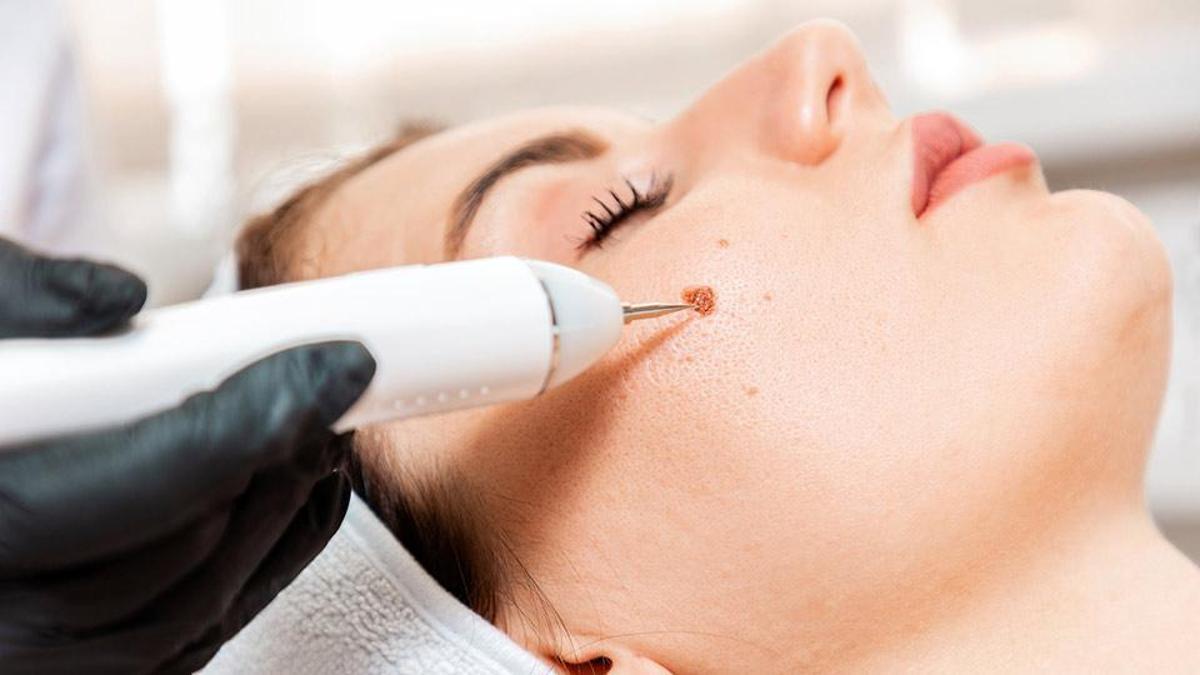When it comes to mole removal, both surgical and laser methods are employed in Riyadh, each with its own set of advantages and disadvantages. The "better" method often depends on the specific characteristics of the mole, the patient's preferences, and the dermatologist's recommendations. If you're looking for safe and effective mole removal in Riyadh, top dermatology clinics offer advanced laser and surgical options to suit your needs.
Surgical Mole Removal
Surgical mole removal involves physically cutting out the mole from the skin. There are two main surgical techniques:
- Surgical Excision: This technique is typically used for larger, deeper, or potentially cancerous moles. The dermatologist uses a scalpel to cut out the entire mole, along with a small margin of surrounding skin. The wound is then closed with stitches.
- Shave Excision: This technique is suitable for raised moles that are mostly above the skin's surface. The dermatologist uses a blade to "shave" off the mole, leaving the base of the mole. This method may not require stitches.

Advantages of Surgical Mole Removal
- Complete Removal: Surgical excision ensures the entire mole is removed, reducing the chance of regrowth.
- Tissue for Biopsy: If there's a concern about the mole being cancerous, surgical removal allows the tissue to be sent to a laboratory for analysis (biopsy).
- Versatility: Surgical methods can be used to remove moles of various sizes, shapes, and depths.
Disadvantages of Surgical Mole Removal
- Scarring: Surgical removal, especially excision, can leave a visible scar. The size and appearance of the scar depend on the size and location of the mole, as well as individual healing factors.
- Recovery Time: The healing process may take longer compared to laser removal, especially if stitches are involved.
- Discomfort: Some discomfort, such as pain and swelling, is expected after the procedure, although it can usually be managed with pain relievers.
Laser Mole Removal
Laser mole removal utilizes concentrated beams of light to destroy the mole tissue. The laser energy targets the pigment in the mole, breaking down the cells. The body's natural processes then eliminate the remnants of the mole.
Advantages of Laser Mole Removal
- Minimal Scarring: Laser removal often results in minimal or no scarring, especially for smaller, superficial moles.
- Quick Procedure: The procedure is typically quick and can often be performed in a single visit.
- Less Invasive: Laser removal is generally less invasive than surgical methods, as it does not involve cutting the skin.
- Faster Healing: The healing process is usually faster compared to surgical removal.
Disadvantages of Laser Mole Removal
- Not Suitable for All Moles: Laser removal is most effective for small, flat, and superficial moles. It may not be suitable for larger, deeper, or raised moles.
- No Tissue for Biopsy: Laser removal destroys the mole tissue, so it cannot be sent for biopsy to check for cancer.
- Multiple Sessions: Some moles may require multiple laser sessions for complete removal.
- Potential for Regrowth: There is a slightly higher risk of mole regrowth with laser removal compared to surgical excision, though this is still generally low.
Which Method Is Better?
The choice between surgical and laser mole removal depends on several factors:
- Mole Characteristics:
- For small, flat, and superficial moles, laser removal is often preferred due to its minimal scarring and quick healing.
- For larger, deeper, raised, or potentially cancerous moles, surgical excision is usually recommended to ensure complete removal and allow for biopsy.
- Location of the Mole: Moles in cosmetically sensitive areas, such as the face, may benefit from laser removal to minimize scarring.
- Patient Preferences: Some patients may prefer the less invasive nature of laser removal, while others may prioritize the certainty of complete removal with surgical excision.
- Dermatologist's Recommendation: The dermatologist will assess the mole and recommend the most appropriate removal method based on their professional judgment.
In Riyadh
In Riyadh, both surgical and laser mole removal are available at various dermatology clinics and hospitals. Dermatologists in Riyadh are trained to assess moles and determine the best course of action for each individual case.
Conclusion
Both surgical and laser mole removal are effective methods for removing moles. Surgical removal provides the advantage of complete removal and tissue for biopsy, while laser removal offers minimal scarring and faster healing. The optimal method varies depending on the mole's characteristics, location, and the individual's needs. It is crucial to consult with a qualified dermatologist in Riyadh to discuss your options and determine the most suitable approach for your specific situation.




Comments